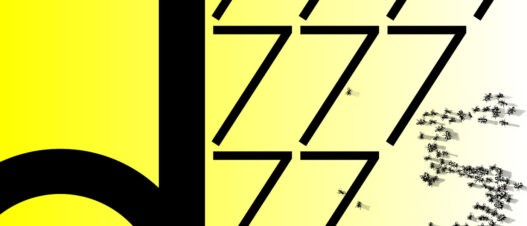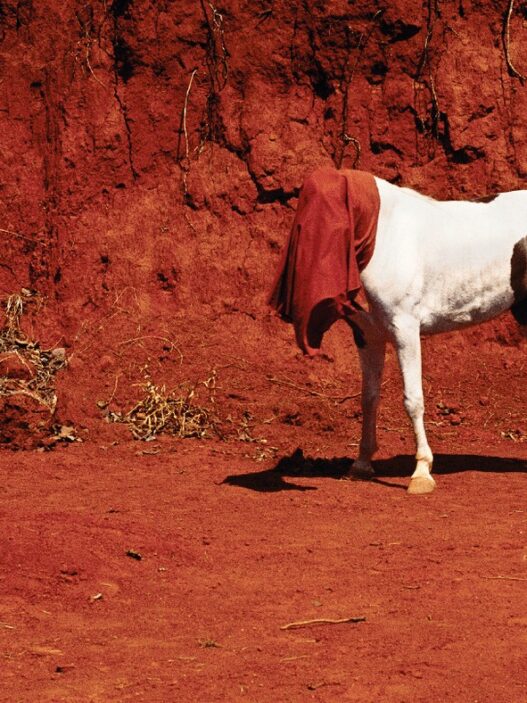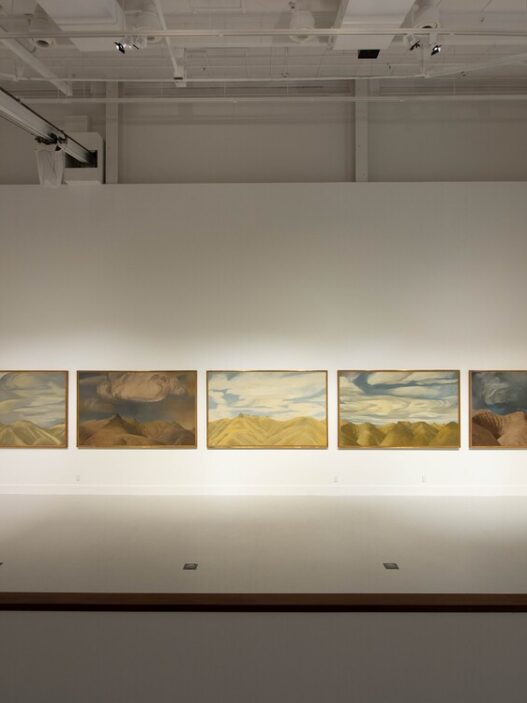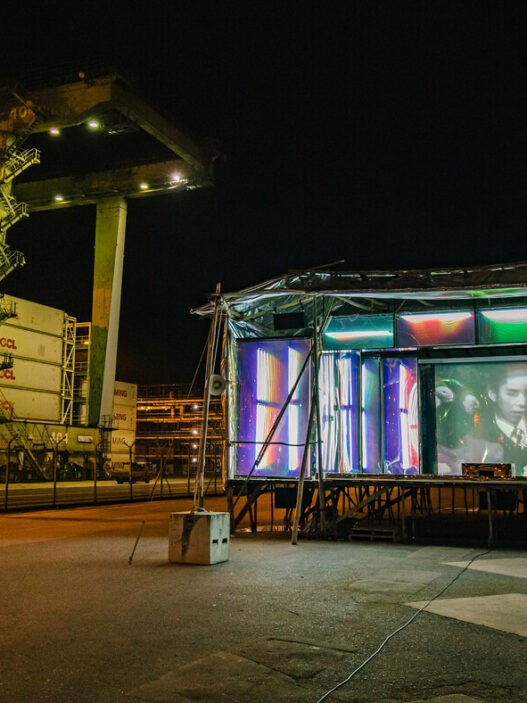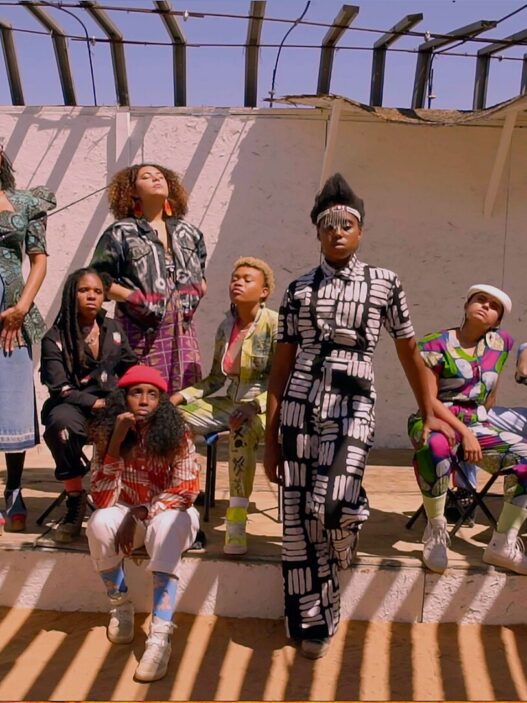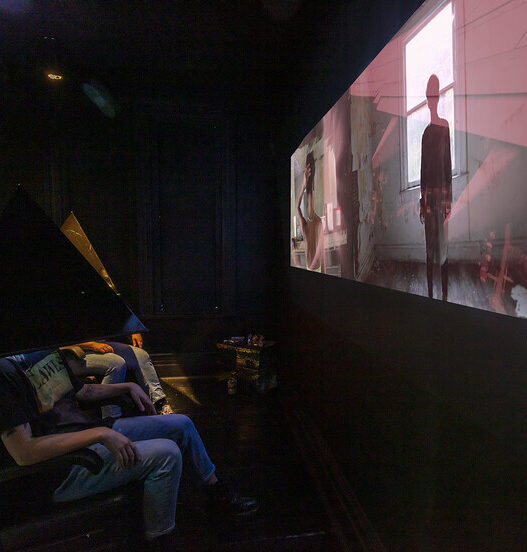July 18, 2022–March 25, 2023
The inaugural Documenta was held in Kassel in 1955. The 15th edition of the exhibition is now being shown in 2022, 67 years after it first opened. The 100-day exhibition had a long-lasting impact on the collections and programs of the art institutions in the Federal Republic of Germany and was long considered as a trustworthy status report on the art of the period. At the same time, it has always been a vital force behind institutional critique: documenta frequently started discussions, gatherings, and exhibitions. The exhibition history of the Lenbachhaus also makes specific mention of this effect. Without Documenta11, which was organized by Okwui Enwezor, our most recent project, “Group Dynamics – Collectives of the Modernist Period,” would not have been possible.
The documenta’s past and founding myths are now subject to rigorous examination. Recent studies like the comprehensive exhibition documenta: Politics and Art at the Deutsches Historisches Museum in Berlin have focused on the continuity between National Socialism and the fledgling Federal Republic, particularly. Additionally, the documenta no longer holds the title of “most significant exhibition of contemporary art in the Western world.” It is still one of the most intriguing exhibition projects to this day, despite all of its paradoxes, and is distinguished by its alternating curatorial teams. The documenta has therefore established itself as an institution and has continuously updated itself by establishing new claims, tasks, and methods in spite of all of its crises.
documenta and contemporary history
The reaction of student reform movements in 1968 to Documenta 4 (1968), the geopolitical changes in the Soviet Union and its sphere of influence to Documenta X (1997), the terrorist attacks of September 11, 2001 to Documenta 11 (2002), the war in Afghanistan to Documenta 13 (2012), and the effects of the European Union’s austerity policy to Documenta 13 (2012) were probably the most striking examples of the interaction between the Documenta and its sociopolitical context (2017). In the best sense, curating entails engaging with modern aesthetics and political relevance.With its interpretation of the East-West conflict and the postwar order, the first Documenta had already established a direction of influence from which German museums took their goals in later years. No matter how harshly the documenta exhibitions were or are criticized, it is clear that their influence on museums, whether immediate or delayed, has been and continues to be significant. It almost seems evident that museums have been able to depict the documenta’s various pioneering roles by utilizing their continuity. Therefore, it must be admitted that this reflection has made the museums more fascinating and relevant, despite all the criticism of the various individual themes of the documenta editions.
documenta and the Lenbachhaus
Now, on the occasion of documenta fifteen in 2022, the Lenbachhaus is presenting the exhibition The Remains of 100 Days…documenta and the Lenbachhaus. A selection of significant works from all documenta exhibitions—from the first edition in 1955 to the 14th in 2017—documents which works “of 100 days” have remained visible in a museum collection. Taking the Lenbachhaus in Munich as an example, the exhibition reveals what a powerful resonating body the documenta has been in the Federal Republic’s museum landscape up to the present. To this day, the Lenbachhaus has had a particularly close connection to the documenta. As early as 1955, important works of art from the inner circle of the Blue Rider group were at the center of the project in Kassel. Today, paintings such as Gabriele Münter’s Still Life Gray (1910), Franz Marc’s Deer in the Snow II (1911), and Wassily Kandinsky’s Parties diverses (1940) are among the works on which the international reputation of the Lenbachhaus collection is based. Important works from the Lenbachhaus’ Blue Rider collection were also featured at II. documenta (1959) and documenta III (1964). With Fritz Koenig’s sculpture Large Votive K (1963/64) and Asger Jorn’s painting They Never Come Back (1958), the Lenbachhaus made its first acquisitions from the contemporary art segment of the early documenta exhibitions. From the political orientation of 4. documenta (1968), Öyvind Fahlström’s large panorama of the Vietnam War, Live Curve 2 (Snowfield) from 1967, entered the Lenbachhaus collection. From Joseph Beuys’s first appearance at the documenta, we present Bienenkönigin I (1947–52), from the Lothar Schirmer Collection.
The strategy of purchasing entire series or groups of related works from the documenta continues to this day. Thus, an entire room of “shaped canvases” by Ellsworth Kelly from DOCUMENTA IX (1992) entered the Lenbachhaus collection. From dOCUMENTA (13) (2012), two significant installations can now be found at Lenbachhaus: Ceal Floyer’s ’Til I Get It Right (2005), and Tejal Shah’s Between the Waves (2012), as well as part of Thomas Bayrle’s wall relief Carmageddon (2012). Most recently, documenta 14 (2017) left its mark with paintings by Miriam Cahn and sculptures by Nevin Aladağ. The Lenbachhaus has, however, also been a lender to the documenta: For documenta X (1997), for example, the curator Catherine David borrowed Gerhard Richter’s Atlas (since 1962) and programmatically placed it at the center of her exhibition in the Fridericianum in Kassel.
One thesis would be that the documenta had, and still has, a great influence on the Lenbachhaus and certainly on the entire museum landscape of the Federal Republic of Germany. For the Lenbachhaus, the intersection is clear, and can be seen almost exclusively through works by Western European and North American artists. Thus, another thesis could be that the different thematic focuses of the documenta exhibitions were broken down to the clearly narrower collection policies of the respective museums. Okwui Enwezor’s Documenta11 is an example of this. The opening up to art production from countries that had previously hardly been represented at documenta, initiated by him, was not reflected in the collection of the Lenbachhaus for a long time. It was only through a donation made in 2020 that Tejal Shah’s Between the Waves, the first “documenta work” by an artist who does not live and work in Europe or the USA, entered the museum.
Curated by Matthias Mühling, Eva Huttenlauch, and Dierk Höhne.
Luisenstraße 33
80333 Munich
Germany









